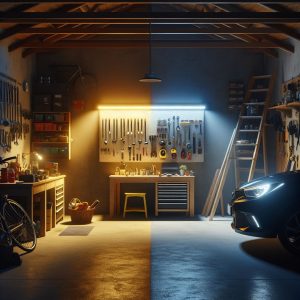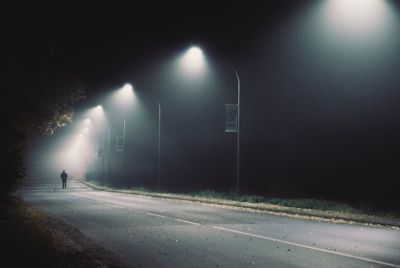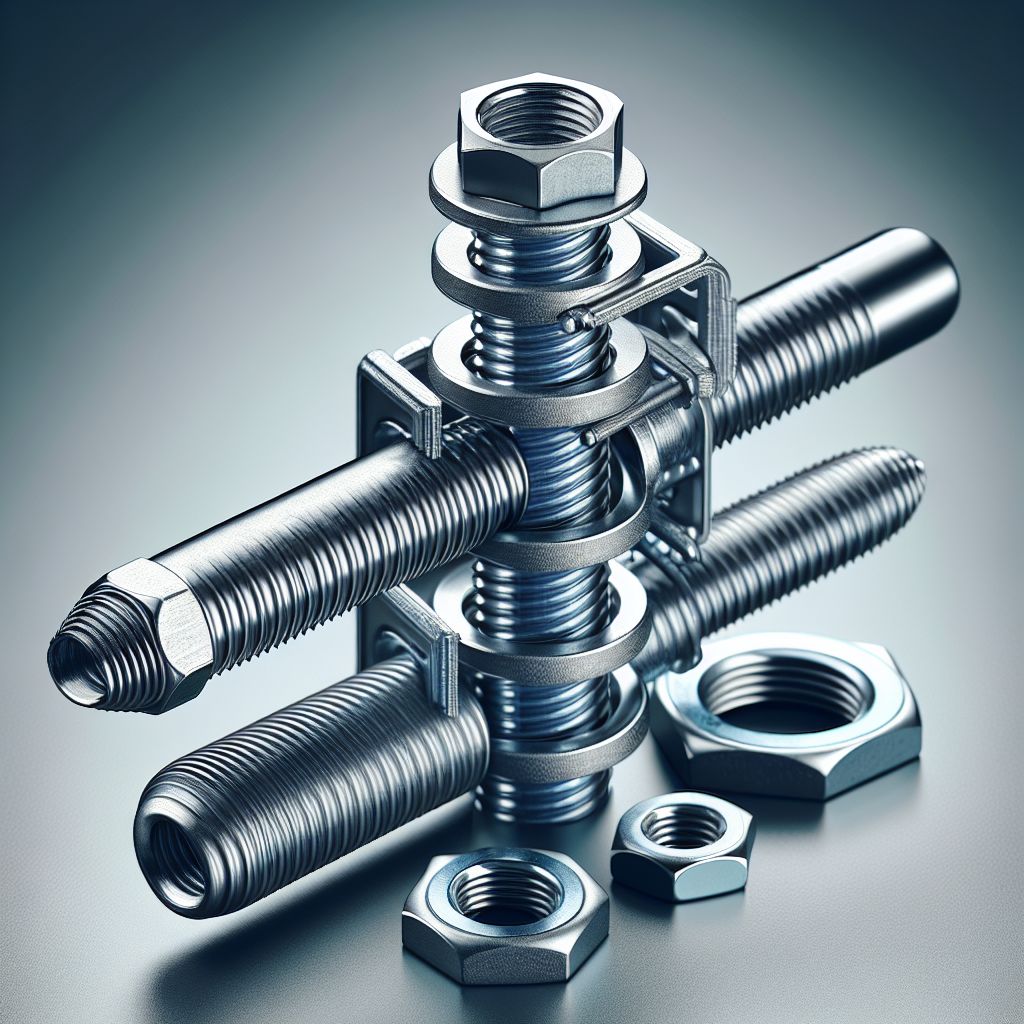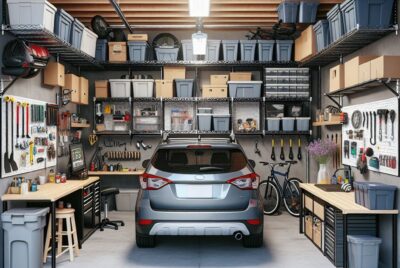Best LED Garage Workbench Lighting Solutions & Tips
Key Takeaways
- LED lighting is the top choice for garage workbenches due to its energy efficiency, brightness, and longevity.
- Understanding the difference between task and ambient lighting is essential for creating an effective workspace.
- Color temperature and lumens are key factors in selecting the right LED lights for your garage workbench.
- There are various LED lighting fixtures to consider, such as adjustable ceiling lights, strip lights, and wraparound fixtures.
- Installing LED lighting can be straightforward, and maintaining it ensures a long-lasting bright work environment.
Shedding Light on Your Workbench: The LED Revolution
As we move further into the 21st century, LED lighting has taken over as the preferred choice for most lighting needs, especially in workspaces like garages. Why LED, you ask? It’s simple. LEDs offer incredible energy efficiency, which means lower electricity bills. They also have a much longer lifespan compared to traditional bulbs, which means less hassle and more time working on your projects. But most importantly, LEDs provide excellent brightness and clarity, which is vital for detail-oriented tasks.
What LED Lighting Can Do for Your Workspace
Imagine stepping into your garage and flipping a switch to reveal a brilliantly lit workbench where every tool and component is visible. LED lighting has the power to transform your garage from a dimly lit cave to a vibrant workspace. Not only does it make your space safer by reducing the risk of accidents, but it also allows you to work more efficiently. No more straining your eyes or dealing with shadows and glare—LED lighting illuminates your workbench evenly, making every detail crystal clear.
Benefits of LED for Detail-Oriented Tasks
For those of us who love to get our hands dirty with DIY projects or need to make precise repairs, the right lighting is non-negotiable. LEDs offer a spectrum of color temperatures, which means you can choose a light that mimics daylight, making it easier to see fine details and true colors. This is particularly beneficial for tasks like color matching wires, painting, or working with small parts. Additionally, LEDs don’t emit much heat, so you can work for longer periods without the discomfort of a hot lamp bearing down on you.
Choosing the Right LED Lights
So, how do you go about picking the perfect LED lights for your garage workbench? It’s not as simple as grabbing the first LED bulb you see on the shelf. You need to consider your workspace’s specific needs to find the ideal lighting solution.
Task Lighting vs. Ambient Lighting
There’s a big difference between task and ambient lighting. Task lighting is focused, direct light that illuminates a specific area—like your workbench. This is what you’ll need for most of your detailed work. Ambient lighting, on the other hand, provides a general light that fills the entire garage. It’s important to have both, but for a workbench, task lighting should be your priority.
Color Temperature and Lumens
Two terms you’ll want to get familiar with are color temperature and lumens. Color temperature is measured in Kelvins and determines whether the light is warm or cool. For a garage workbench, you’ll want something that resembles daylight, typically around 5000K to 6500K. Lumens measure the brightness of the light. The larger your workbench and the more detailed the tasks, the more lumens you’ll need. A good rule of thumb is to aim for at least 100 lumens per square foot of workspace.
Adjustable LED Ceiling Lights
Let’s start with one of the most versatile options: adjustable LED ceiling lights. These fixtures are a game-changer because they allow you to direct light exactly where you need it. With adjustable arms or panels, you can focus light on different areas of your workbench without moving the fixture itself. This means you can switch between tasks with ease, ensuring that every project is lit to perfection.

Foldable Garage LED Bulbs E27 Light
Adjustable LED ceiling lights come in various designs, some with dimming capabilities that let you control the intensity of the light. This is especially helpful when you’re working with materials that have different reflective properties or when you’re working at different times of the day.
LED Strip Lights for Under-Cabinet Visibility
Next, consider LED strip lights for under-cabinet lighting. These slim, adhesive strips can be tucked neatly under shelves or cabinets, providing focused light that eliminates shadows on your workbench. They’re perfect for illuminating tools and parts stored underneath, and their low profile means they won’t intrude on your workspace.
LED strip lights are also flexible and can be cut to fit any space, making them a customizable option for any garage workbench. Plus, they’re easy to install—most come with a peel-and-stick backing and plug directly into an outlet, no electrician needed.
Overhead LED Wraparound Fixtures
For those who prefer a more traditional look, overhead LED wraparound fixtures are a solid choice. These fixtures provide broad, even light that covers your entire workbench, reducing eye strain and improving visibility. They’re designed to minimize glare and often have a diffuser that spreads light evenly, which is crucial when you’re working on intricate tasks.
Portable LED Work Lights
Don’t forget about portable LED work lights. These are the trusty companions for any DIYer. Portable lights can be moved around as needed, providing extra illumination right where you need it. Whether you’re crawling under a car or peering into the back of a cabinet, a portable LED light can go with you, ensuring that no detail is missed.
Many portable LED work lights also have adjustable settings, and some even come with magnetic bases or hooks for hands-free use. They’re a great addition to any garage workbench setup because they offer flexibility and precision.
Installation Simplified: Setting Up Your LED Lighting
Now that you’ve chosen your LED lights, it’s time to set them up. Don’t worry; it’s not as daunting as it sounds. Many LED lighting options are designed with the DIYer in mind, offering simple installation methods that don’t require an electrician.
Before you start, make sure you have all the necessary tools and hardware. Read the manufacturer’s instructions carefully. Safety first: always turn off the power at the circuit breaker before working with electrical fixtures.
Strategic Placement for Maximum Efficiency
The key to effective lighting is all about placement. For ceiling lights, center them over your workbench to ensure an even spread of light. For strip lights, position them toward the front edge of the underside of cabinets to illuminate your workbench without casting shadows from your hands or tools.
Step-by-Step Guide to Installing LED Strips
Installing LED strip lights is a breeze, and here’s how you can do it:
- Measure the area under your cabinet or shelf where you want to place the strip.
- Cut the strip to length, if necessary, using scissors or a knife at the designated cut points.
- Peel off the adhesive backing and press the strip firmly in place.
- Connect the strip to the power supply and plug it in. Some models may also require connecting a controller.
- Turn on the power and enjoy your new lighting!
It’s that easy! With these simple steps, you can enhance your workspace in no time. For more detailed setups, consider exploring garage corner workbench solutions.
Remember, lighting is not just about visibility—it’s also about creating an environment that’s conducive to work. With the right LED lighting, you can transform your garage workbench into a space where creativity and productivity thrive.
Lighting for Longevity: LED Maintenance and Troubleshooting
LEDs are known for their durability and long life, but like any technology, they can encounter issues. The good news is that most problems are easy to fix, and with proper maintenance, your LED lights can last for years.
Keeping LEDs Bright: Cleaning and Care
One simple way to ensure your LEDs remain bright is to keep them clean. Dust and dirt can accumulate over time, dimming your lights. Use a soft, dry cloth to gently wipe down the bulbs and fixtures. For tougher grime, a damp cloth with a bit of mild detergent will do the trick. Just make sure the lights are turned off and cool to the touch before cleaning.
Solving Common LED Issues
If you encounter flickering or a light that won’t turn on, here are a few troubleshooting tips:
- Check the connections: Loose wiring or plugs can cause flickering. Ensure everything is securely connected.
- Examine the power supply: A faulty power supply or incompatible dimmer switch can lead to issues. Make sure your power supply matches the specifications of your LED lights.
- Replace any faulty bulbs: Sometimes, a bulb may simply burn out. Replacing it will usually solve the problem.
With these tips, you’ll be able to keep your garage workbench well-lit and ready for any project that comes your way. Remember, good lighting is the cornerstone of any effective workspace, and with LED technology, you can achieve the perfect balance of brightness, efficiency, and longevity.
Pairing Natural Light with LED Light

While LEDs are fantastic, let’s not forget about the sun’s free and abundant natural light. Positioning your workbench near a window can provide excellent daytime illumination, reducing the need for artificial lighting. But when the sun sets or on cloudy days, that’s where LEDs shine. The key is to blend natural light with your LEDs to create a seamless and adjustable lighting environment. This way, you can work comfortably at any hour, knowing that you have the best lighting possible.
Creating a Flexible Lighting Scheme
Flexibility is crucial when it comes to lighting your garage workbench. Sometimes, you need bright light for detailed tasks, and other times, softer light is better for general work. Opt for LED fixtures with dimming capabilities to adjust the brightness as needed. Also, consider using multiple light sources that can be turned on and off independently. This approach allows you to customize the lighting based on the task at hand, creating a truly versatile workspace.
Energy-Saving Practices
Energy efficiency is one of the main advantages of LED lighting, but there are additional steps you can take to save energy. Use motion sensors or timers to ensure lights are only on when needed. Keep your LEDs clean for optimal performance, and choose products with a high energy star rating. By adopting these practices, you’ll not only save on energy costs but also contribute to a more sustainable environment.
FAQ
If you’re considering upgrading to LED lighting for your garage workbench, you might have some questions. Here are answers to some of the most frequently asked questions to help you make an informed decision.
How do I determine how many lumens my garage workbench needs?
To calculate the lumens required for your workbench, first measure the area in square feet. For tasks that require attention to detail, aim for at least 100 lumens per square foot. So, if your workbench is 10 square feet, you’d want at least 1000 lumens. Keep in mind that this is a general guideline, and you may prefer more or less brightness based on your specific needs.
Can LED lights interfere with garage door openers?
Some LED lights can cause interference with garage door openers due to the electromagnetic field they generate. To avoid this, look for LEDs that are specifically labeled as “garage door opener friendly” or choose bulbs with a lower electromagnetic interference (EMI) rating.
Is it better to have cooler or warmer LED lights for detailed work?
For detailed work, cooler LED lights with a color temperature resembling daylight (5000K to 6500K) are generally better. They provide high contrast and make it easier to see fine details. Warmer lights, on the other hand, are more suitable for creating a relaxed atmosphere and may be preferred for general tasks.
What is the average lifespan of LED garage workbench lights?
LED lights are known for their long lifespan, often lasting up to 50,000 hours or more. This means that if you use your LED workbench lights for an average of 8 hours a day, they could last over 17 years. This longevity makes them an excellent investment for your workspace.
Can LED lighting be used in outdoor garage workspaces?
Absolutely, LED lighting is suitable for both indoor and outdoor workspaces. When choosing LED lights for outdoor use, make sure they are rated for outdoor conditions and are waterproof or water-resistant. This will ensure they can withstand the elements and continue to provide excellent illumination for your outdoor projects.
In conclusion, upgrading your garage workbench with LED lighting is a smart move. Not only will it save you money in the long run, but it will also enhance your productivity and safety. Remember to consider the type of tasks you’ll be performing, choose the right color temperature and lumens, and look for energy-efficient options. With the right setup, you’ll have a workspace that’s well-lit, efficient, and adaptable to any project. Happy tinkering!
*We may earn a commission for purchases made using our links. Please see our Disclosure to learn more.




